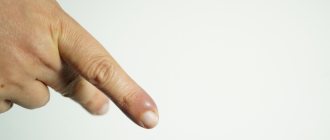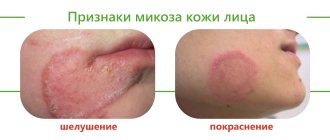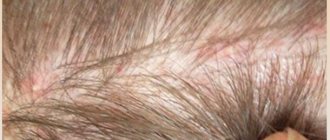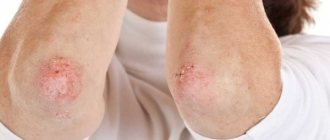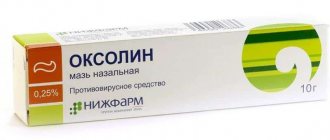Let's start with what warts are in general. Warts, or papillomas, are dense, nodular, round or flat growths that most often form in 5 areas of the body:
- Palms
- Feet
- Armpits
- Genitals
- Face
You've probably heard many myths about warts. For example, that they arise from contact of the skin of the hands with frogs and toads, or that it is simply a superficial skin disease. In fact, papillomas of any type in children and adults have only one cause - the human papillomavirus (HPV). Warts are only an external manifestation of this disease.
HPV and warts
HPV is a whole group of viruses that infect humans. Several dozen strains of HPV can live in the body of one person, but this does not pose any threat to health if you have a strong immune system and do not have serious chronic diseases that weaken it. HPV does not manifest itself in any way until the body’s immune functions decrease to a certain level. If you notice warts on yourself, you should think first not about the aesthetic appearance of your skin, but about your health.
It is worth understanding that HPV is not some rare disease. It occurs in at least half of the world's population, it simply does not manifest itself, and is dangerous only in a number of cases.
Infection with the human papillomavirus occurs during sexual intercourse or kissing, when sharing personal hygiene items - towels, washcloths, nail scissors, etc.
Routes of infection with human papillomavirus, which causes the development of warts
The virus can reach a healthy person through direct contact - a handshake, for example, or through infected objects: toys, handrails on public transport. Two to three hours of virus life in the external environment is enough for someone to become infected with warts: the infection is quite common.
Cosmetic defect is the main complaint of patients with warts. There is usually no pain. Moreover, many medical procedures, such as cryodestruction, cause more suffering than the warts themselves.
Types of warts and their location
1. Simple or vulgar warts occur mainly in children and adolescents. These are round, dense growths on the hands, face or lips. More than 65% of all skin warts are of this type. 2. Flat warts of various shapes with a smooth surface appear in adolescence on the fingers, feet, and oral mucosa and are not common - only 3-4% of all cases. 3. Palmoplantar papillomas can appear at any age. These are hard, round formations with layers of keratinized layers of skin. Most often they form on the feet and over time cause a person severe pain when walking. 4. Thread-like papillomas of flesh-colored, brown or coffee color are located in the folds of the skin of different parts of the body - genitals, armpits, eyelids, neck. These are elongated warts with a “pedicle”. 5. Soft genital warts are located on the mucous membranes in the groin, rectum or urethra. They manifest themselves in the form of a ball, pyramid or nodular cluster, and are rarely found in a single copy. Genital warts are often multiple growths with a keratinized surface.
Removing warts using radio waves
1. A 1-2% solution of local anesthetic (for example, lidocaine) is injected into the area around the wart or under it.
2. Using a radio wave scalpel, the wart is excised within healthy skin.
Immediately after removal, a fairly deep wound is formed at the site of the wart (to the entire depth of the removed wart).
How to treat warts
Answering the question in the title of the article, we will say: you need to remove warts, but only as prescribed by a doctor. In no case on your own! In some cases, removal is contraindicated, so be examined before making a decision.
In modern medicine, warts are safely removed using surgery, electric current, laser or liquid nitrogen. Such procedures do not leave serious scars on the skin and help quickly get rid of papillomas. At the same time, the patient is prescribed specially selected antiviral and immunomodulatory therapy, which helps suppress the HPV outbreak and significantly increase immunity.
If the wart is small in size, does not grow and does not interfere with the natural movement of the body, then you can try to cure it with special ointments. Treatment takes a lot of time and is always discussed between the doctor and the patient during the examination.
Also, every patient should understand that today there are no medications or procedures that can permanently rid the body of HPV. No one is immune from relapses. But you can suppress the influence of HPV with the help of a healthy lifestyle, increasing the body’s immune functions, hygiene and barrier contraception.
What to do if you accidentally pick off a wart?
It is not uncommon for a patient to accidentally tear off a wart. The doctor will also tell you what to do in such a situation, but before going to a medical facility, you should definitely disinfect the injury site and try to stop the bleeding as quickly as possible. It is important to apply a tight bandage.
Removing warts is a complex medical task, which today involves the use of such hardware techniques as laser destruction , electrocoagulation and cryodestruction. Highly qualified specialists of the NEOMED clinic, who care about both the health and aesthetic condition of each patient, will help you decide whether it is better to remove warts with laser or nitrogen.
Find out the cost of the procedure “Removal of tumors”
Why are traditional methods of treatment dangerous?
Many people remember cauterization with celandine, iodine and vinegar from childhood. Some people removed warts using a silk thread, while others applied hot metal objects to them to burn them out! All these methods are not only ineffective in the fight against warts and HPV, but also dangerous to human health.
As a result of such “home” treatment, a child or adult can receive multiple burns, scars and welts, and removal with a thread only provokes further growth and spread of papillomas on the skin.
We live in the 21st century, where there are modern methods of treatment and correction that are safe for health. If you find papillomas on the skin or mucous membranes, first make an appointment with a dermatovenerologist or gynecologist. The doctor will prescribe treatment and, if necessary, refer you to a surgeon for quick removal of the papilloma.
The MC “Health” network welcomes doctors - gynecologists, dermatovenereologists and surgeons with extensive experience. Hundreds of patients come to appointments with external manifestations of HPV, and our specialists consider each case individually - prescribe the necessary tests and studies, adjust treatment, and help quickly cope with the disease. You can make an appointment with any doctor on the clinic’s website.
Don’t delay the examination and get treatment from professionals!
Can it be cut or torn off?
Warts on the body can cause significant psychological and sometimes physical discomfort. They often try to remove such tumors using folk remedies, and sometimes simply cut them out or tear them off. But such methods of getting rid of warts can greatly aggravate the situation and even be harmful to health.
Doctors strongly recommend that you stop trying to remove unwanted growths on the skin on your own. After all, if you cut off a wart, you can later end up in the hospital with serious complications.
Symptoms of wart dying
When exposed to complex therapy, suppressing the reproduction of papillomavirus, the formation begins to gradually die off. An important point is the drying of the roots.
The process when a wart dies off consists of the following signs and clinical symptoms:
- the growth externally acquires a dark gray or blue-black color, which indicates destruction of the formation, separation of connections with vascular structures;
- A slight itching of the surrounding tissue may appear due to the functioning of the immune system, healing of the wound surface after damage to the HPV lesion;
- the formation may become convex due to the replacement of the infected area with scar, connective tissue;
- the skin around the growth may become red and inflamed, but there is no pain or discomfort.
Safe symptoms of dying off are spontaneous drying, as a result of which the wart falls off. It can be observed during correction of the immune status and activation of the body’s defenses.
For any atypical manifestations of skin elements, you should seek medical help to avoid negative consequences and complications.
Methods for removing damaged growth
Need advice from an experienced doctor?
Get a doctor's consultation online. Ask your question right now.
Ask a free question
Surgical excision is performed for large-scale growths, suspected or confirmed cancer processes. The method is traumatic, painful, and is performed under local anesthesia. The postoperative period depends on the size of the removed element, the regenerative features of the skin, on average it is 14-30 days. Modern methods of removing damaged warts consist of using hardware techniques that are characterized by quick results, low invasiveness, and minimal contraindications.
The recovery period takes 7-14 days, after application there are no scars left:
- laser coagulation allows you to remove the deep roots of warts, leaving no traces in the form of scars;
- cryodestruction with liquid nitrogen - extremely low temperatures necrotize the growth, it falls off on its own after the procedure;
- diathermoelectrocoagulation – excision with electric loops eliminates formations in hard-to-reach places;
- radio wave method - the element melts under the influence of a radio wave field, the surrounding healthy tissues are not involved in the healing process;
- burning with acids – point cauterization with aggressive substances.
After removal, therapy with immunocorrective drugs is carried out to prevent relapse of papillomatosis.
Why can't I delete it myself?
First of all, it is worth considering that a wart is a consequence of the activity of the human HPV virus. It contains thin capillary vessels. Mechanical removal of the growth will lead to bleeding and the appearance of a wound on the skin. Doctors are confident that damage to a wart can lead to the spread of viral particles through the bloodstream and the emergence of new similar growths in other parts of the body.
Today, doctors can offer several options for the safe removal of warts, from which you can choose the ideal method that suits you.
Consequences
Attempts to independently eliminate warts on the body may end in:
- Excessive bleeding due to vascular damage.
- Spread of warts throughout the body.
- The appearance of noticeable scars and scars on the body.
- The occurrence of an infectious complication, because a wound on the body becomes an excellent entry point for infection.
Infectious complications very often occur in people who risk removing warts on their own. After all, in the presence of such growths on the body, the immune system is already suppressed, so the risk of active proliferation of microbes, inflammation and suppuration of the wound is very high.
How to stop bleeding
If a wart is picked accidentally or intentionally, it will begin to bleed. Also, if you notice that blood is coming from a condyloma or papilloma, this is the first sign that the wart is damaged or will soon come off.
If the wart bleeds and the bleeding is light, it can be stopped with a simple cotton pad or swab.
If there is excessive bleeding, apply a tight bandage or tourniquet. Even if the bleeding is successfully stopped, a consultation with a dermatologist is necessary. It may be necessary to remove any remaining loose debris from the wound.
If the bleeding is severe and cannot be stopped, you should consult a doctor immediately!
What steps to take next
What to do if you rip off a wart? This is a common question during consultations with a dermatologist. If you see that the wart is coming off or has already come off, you need to take action.
You need to make sure that the wound does not get infected. To do this, it should be sealed with adhesive tape. If the affected area is large, then bandage it with a bandage.
If necessary, the doctor will prescribe ointments or other medications to help promote rapid healing.
First aid for damaged growth
To provide first aid in case of rupture or incomplete removal of a wart with clear clinical symptoms, it is necessary to perform a number of manipulations:
- treat the affected area with local antiseptics (chlorhexidine, miramistin) or hydrogen peroxide. If there is bleeding, moisten a cotton swab and press it firmly to the wound; if necessary, change the cotton swab several times until the bleeding has completely stopped;
- in the absence of antiseptics, dilute one to one with water and alcohol. Pure alcohol is an aggressive environment for warts; the cauterizing effect in this case is undesirable;
- after bleeding has stopped, it is necessary to protect the wound surface from external influences by gluing a bactericidal, non-fabric plaster or applying a cotton-gauze bandage.
What actions most often cause warts to come off?
The growths located in the area of friction with clothing are torn off and pulled out at the slightest contact. If they are located in a place where a person regularly shave, careless movement can easily damage the wart.
If a wart on your hand comes off, it is mainly a consequence of frequent contact with household chemicals. A torn wart brings great discomfort.
You need to carefully monitor if growths affect the skin of small children. Children can scratch them and accidentally tear them off.
What happens if you pick off a wart?
If a wart is peeled off, it often bleeds. An open wound also appears; if an infection occurs, infection and suppuration may begin. This will prolong the healing time of the affected area.
Also, after the wound heals, a scar or scar forms, which will have to be further removed. If you accidentally puncture or tear off a wart and it starts to bleed, you should consult a doctor immediately.
Is it dangerous
If the formation is damaged (torn off, torn off, combed) or if a deliberate attempt was made to cut or file away the growth (on the sole, elbow), dangerous complications can develop.
If there is bleeding, there is a risk of transmission of infection from the external environment (the wart dries out and pus accumulates under the crust); the escalation of viral particles to surrounding areas of the skin causes the growth of new growths.
Only the cap can come off, and the root is located in the deep layers of the epidermis, which provokes secondary growth of warts.
Treatment of plantar warts at the VELM Hand and Foot Center
The Internet and the media offer many methods for treating, eliminating and getting rid of plantar warts, ranging from the use of ointments and herbs to surgical methods. The most common treatment for plantar warts is cauterization with nitrogen. But, unfortunately, this is certainly an excellent method, suitable for treating the initial stages (based on experience at these stages, a person tries to solve the problem on his own, or simply does not know that he has a plantar wart). And with a developed, enlarged plantar wart, the use of nitrogen can cause a relapse and repetition of the problem, since its roots are deep in the tissue where the action of nitrogen simply does not reach.
Specialists of the VELM Rehabilitation Clinic under the brand “Hand and Foot Center” offer comprehensive treatment for plantar warts, where the problem is eliminated radically, forever and without relapse - naturally, if the recommendations of the medical staff are followed.
Why do you need to remove papillomas?
Those who are interested in what will happen if the wart that has arisen is not removed should be aware of the possible consequences. The presence of papilloma on any part of the body can provoke the following complications:
- there is a risk of the tumor becoming malignant;
- warts can grow over time and invade healthy areas of the integument;
- there is a possibility of the occurrence of inflammatory processes in combination with bleeding and suppuration; this often happens if the growths are picked, pulled out, torn off, or cut off yourself with scissors or a blade.
An inflammatory process may begin in the wound
If the wart is not cut off on time and the pathogen begins its active activity, the likelihood of infecting strangers with this pathology increases significantly.
Which warts are susceptible to injury?
Most of all, the injured are large growths that you want to pick out. It is easy to pick off such a wart by accident.
If the wart is located in a place where there is constant friction with clothing or shoes, then as it grows it can become injured and subsequently come off.
Small thread-like formations have a loose structure, so with the slightest friction they bleed and may fall off.
Condylomas and papillomas have a shape that stands out above the surface of the skin. If located in an area where there is friction with clothing or linen, it is necessary to get rid of such growths as soon as possible so that if damaged, the wound does not become infected.
Precautionary measures
If there are warts on the body, it is necessary to pay attention and take preventive measures to prevent their damage and further spread of infection:
- Do not wear things or hats that put pressure on the growth or rub.
- During cosmetic procedures, make sure that the specialist does not apply aggressive compounds to the wart area or use mechanical force.
- When epilating or sugaring, you should avoid areas where warts accumulate.
- When washing, do not use hard washcloths.
- Protect from direct sunlight.
Eliminate any negative influence. The cause of injuries and complications lies in improper, careless handling.
After mechanical impact
Often the cause of condyloma formation is a virus. Accidental or deliberate tearing will not relieve a person of the problem. You can only rip off the upper part of the epithelium of the warty growth, but this does not eliminate the problem itself, because the root remains in the middle, and the blood vessels constantly feed the formation. So, you cannot pull out or pull out a wart, much less using untreated tweezers, scissors or other tools, because this is fraught with the development of complications.
During mechanical impact on the growth, its stem breaks, which serves as a bridge between the vessels and the formation itself. The resulting wound immediately becomes infected, after which the inflamed area swells, becomes burgundy-red, and the adjacent area of the dermis swells. At the same time, the person feels soreness in this part of the epidermis. The skin may itch and itch, and sometimes liquid, purulent masses may come out, emitting an unpleasant odor.
In order not to stop a possible series of consequences, you need to carefully examine the area and make sure of its type, and also distinguish the growth from the mole in time.
The torn wart should be placed in saline solution
If the wart comes off on its own, it is worth saving the sample. To do this, it is placed in a container with saline solution, which can be prepared at home: add salt (1 tsp) to 1 liter of boiled or distilled water. With this biomaterial you need to go to a doctor for a histological analysis and determine the cause of the wart formation. Thus, you can quickly recover from diseases in the early stages and not wait for complications to develop.
If you do cut off a wart, then it will almost 100% appear in another place, and in the worst case, it will provoke the development of several such growths, and they can form in even larger sizes. But this is not the main danger that accompanies the thoughtless process of cutting. It is worse when a person introduces an infection into the wound with an untreated instrument or finger, which can provoke the development of a malignant tumor in the damaged area or lead to blood poisoning.
If a growth has formed on the chin, cheek, in the area of the nasolabial folds, or in the armpits, you should use a razor carefully. The rusty, untreated end of the blade will cut off the top of the wart, causing bleeding, infection, inflammation, and growth of the wart over a wider area of skin.
The wound may fester after tearing off a wart.



